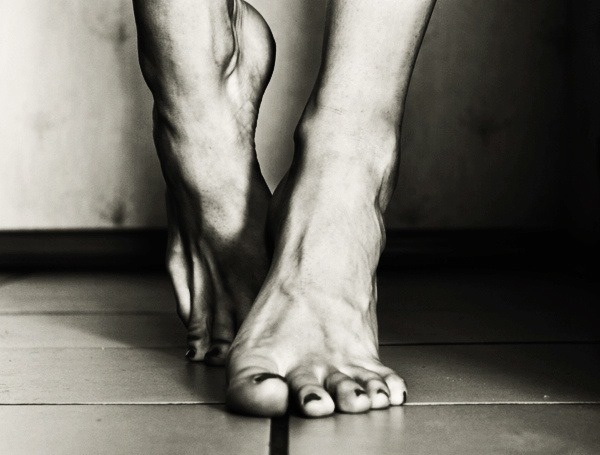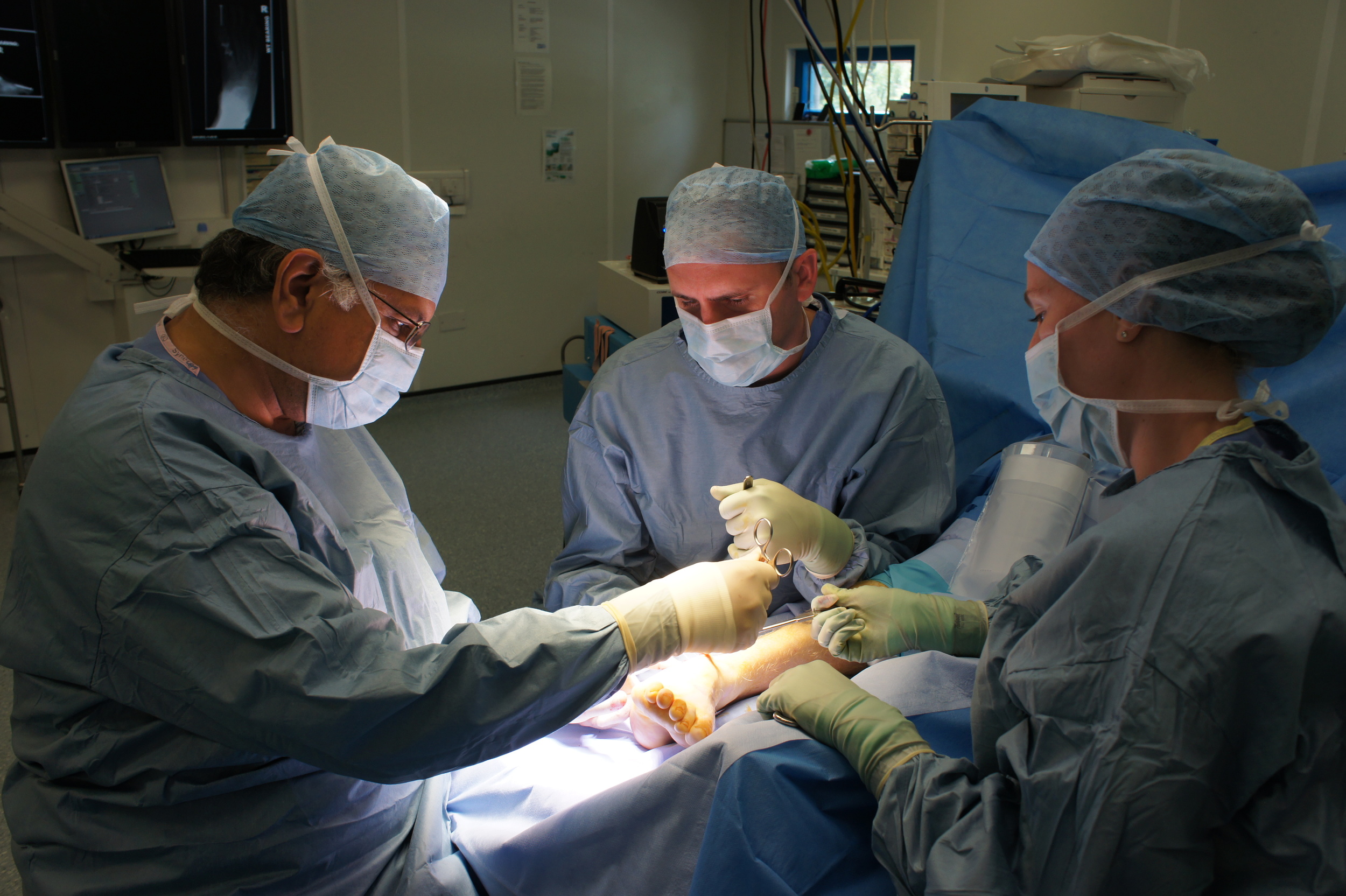Local anaesthetic nerve blocks.
The anaesthetist uses an ultrasound scanner to see the nerves so that they can be accurately blocked.
Modern techniques in foot and ankle surgery, allow patients to recover more quickly and comfortably.
The use of local anaesthetic blocks allows the anaesthetist to temporarily numb the part of the limb that the surgeon is operating upon so that you don't feel pain. These blocks can last for quite a long time after surgery, so that the foot or ankle will remain comfortable during the immediate post-operative period. When the block wears off, patients are often able to control their pain very well with simple pain killers, without the need for stronger opiates and morphine.
The anaesthetist targets specific nerves, sometimes with the assistance of an ultrasound scanner, so that the local anaesthetic can be concentrated precisely where it is needed.
an injection being performed under ultrasound guidance
The blocks are so effective, that many procedures can be performed under a local anaesthetic block, without the need of general anaesthetic.
Commonly used Local anaesthetic blocks are:
A Popliteal Block, where the nerves are blocked around the knee, which numbs the lower leg, which is very helpful in ankle and hindfoot surgery.
An ankle block, where the nerves are blocked around the ankle, which is very useful for surgery to the foot, for example bunion correction.
A ring block, is an anaesthetic block of an individual toe.
Modern techniques in foot and ankle surgery, allow patients to recover more quickly and comfortably.
The use of local anaesthetic blocks allows the anaesthetist to temporarily numb the part of the limb that the surgeon is operating upon so that you don't feel pain. These blocks can last for quite a long time after surgery, so that the foot or ankle will remain comfortable during the immediate post-operative period. When the block wears off, patients are often able to control their pain very with simple pain killers, without the need for stronger opiates and morphine.
The blocks are so effective, that many procedures can be performed under a local anaesthetic block, without the need of general anaesthetic.
Commonly used Local anaesthetic blocks are:
A Popliteal Block, where the nerves are blocked around the knee, which numbs the lower leg, which is very helpful in ankle and hindfoot surgery.
An ankle block, where the nerves are blocked around the ankle, which is very useful for surgery to the foot, for example bunion correction.
A ring block, is an anaesthetic block of an individual toe.




















